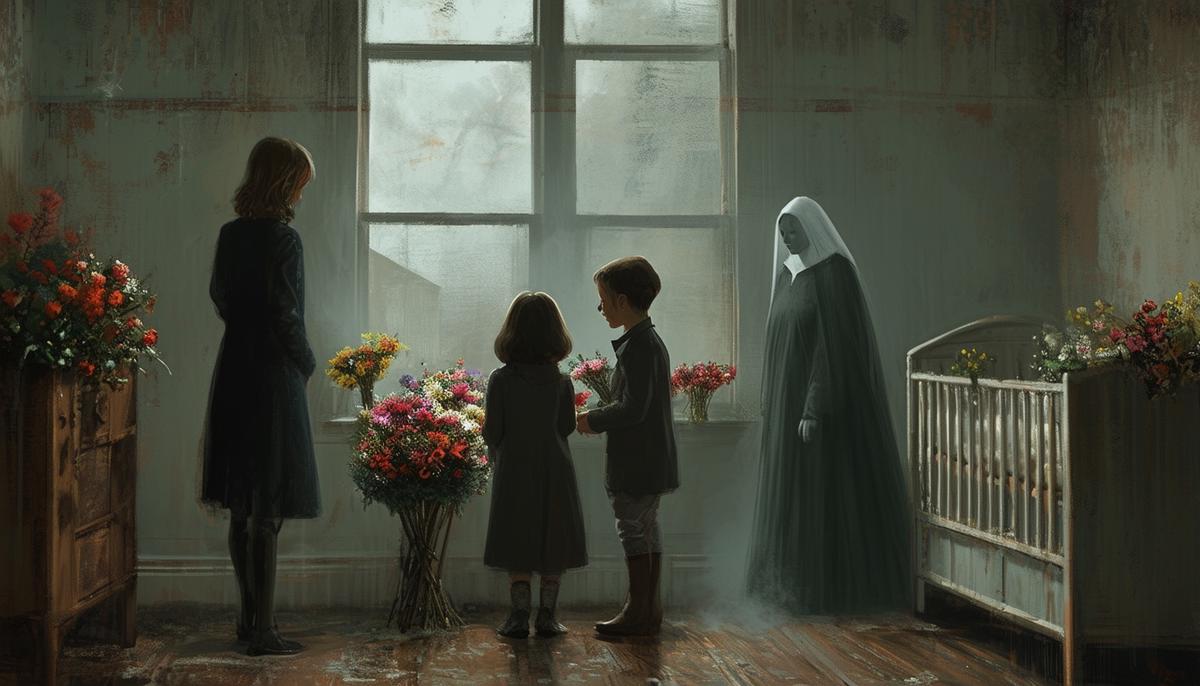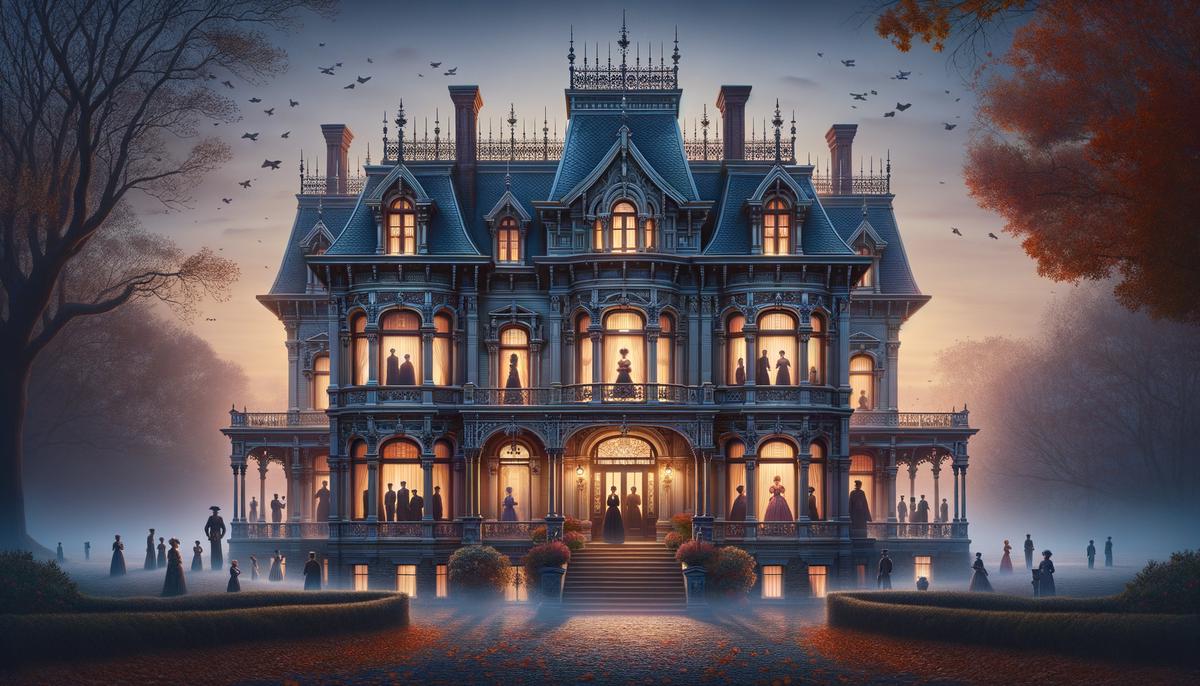The Eerie World of Residual Hauntings
Ever been in a place where you felt an odd chill, like walking into a freezer? That's the weird magic of residual hauntings. These aren't your usual ghost encounters. They're more like a sad playback on a ghostly record, stuck on repeat forever.
Picture this: You're exploring an old, crumbling house at sunset. The fading light makes the shadows longer and darker. You step on creaky floors. The air is thick and quiet. Suddenly, you hear faint whispers, but no one's there.
That's when you feel it – a deep sadness filling the room. You see the ghostly image of a woman in old-fashioned clothes, walking down the same hallway over and over. She doesn't notice you. She's trapped, replaying her last moment forever. Spooky, right? But also kind of sad.
"These ghostly echoes are like watching the saddest play ever, where the actors don't know you're there."
You can't talk to them, and they won't stop. They're stuck in their loop, a ghostly replay of the past. Scary? For sure. Sad? Absolutely.
Next time you're in a place with lots of history, listen closely. You might hear distant laughter, soft crying, or even the muffled sounds of a grand party still echoing through time. They're whispers from the past, moments so big they refuse to fade away.
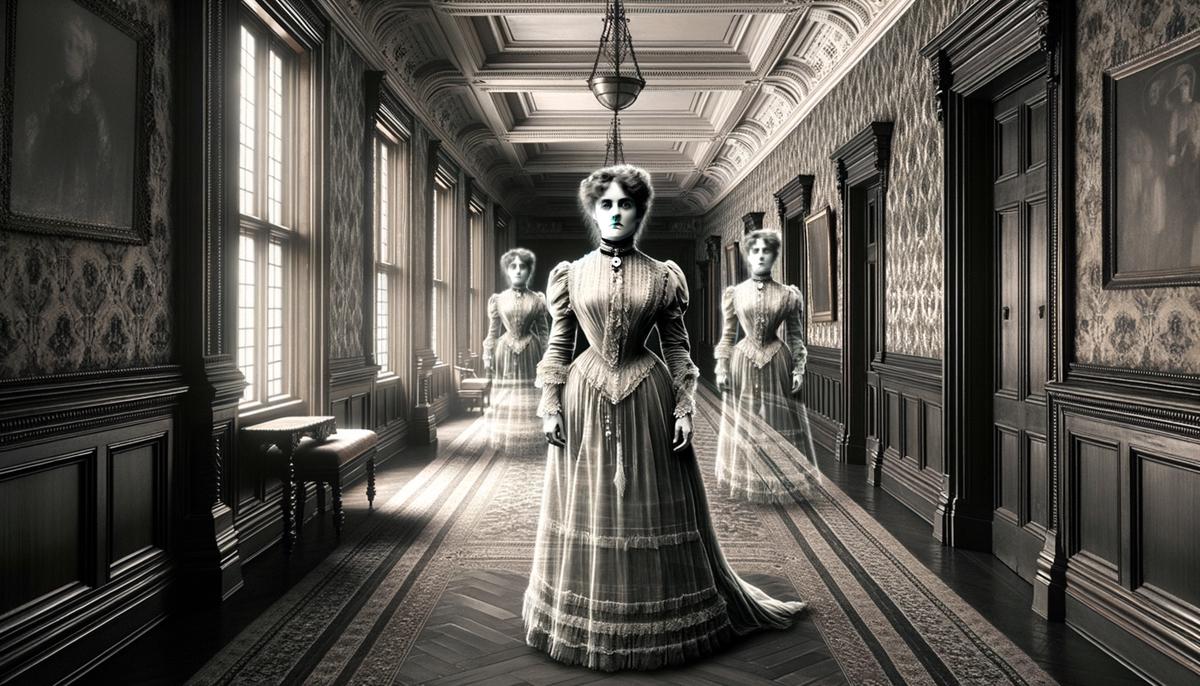
Echoes of History
Imagine walking through the narrow streets of an old European city. The buildings, hundreds of years old, have seen countless people come and go. Each stone seems to whisper stories of the past.
One story might be about a medieval blacksmith, working away with the steady clang of hammer on metal. Years later, as you pass his old workshop, you might still hear faint echoes of his work, taking you back to simpler times.
These ghostly echoes are like windows to important moments in history:
- A nervous crowd in the town square, waiting for news of war
- A sad melody drifting through an ancient castle
- The sounds of battle on old war grounds
Why do these hauntings stick around? Maybe because the events were so full of emotion that they left a mark on the place itself. It's like the walls, the ground, and the air absorbed the feeling of what happened and now play it back, over and over.
When you experience a residual haunting, you're seeing a bit of history stuck on repeat. It's not just a ghost, but a piece of the past asking to be remembered.
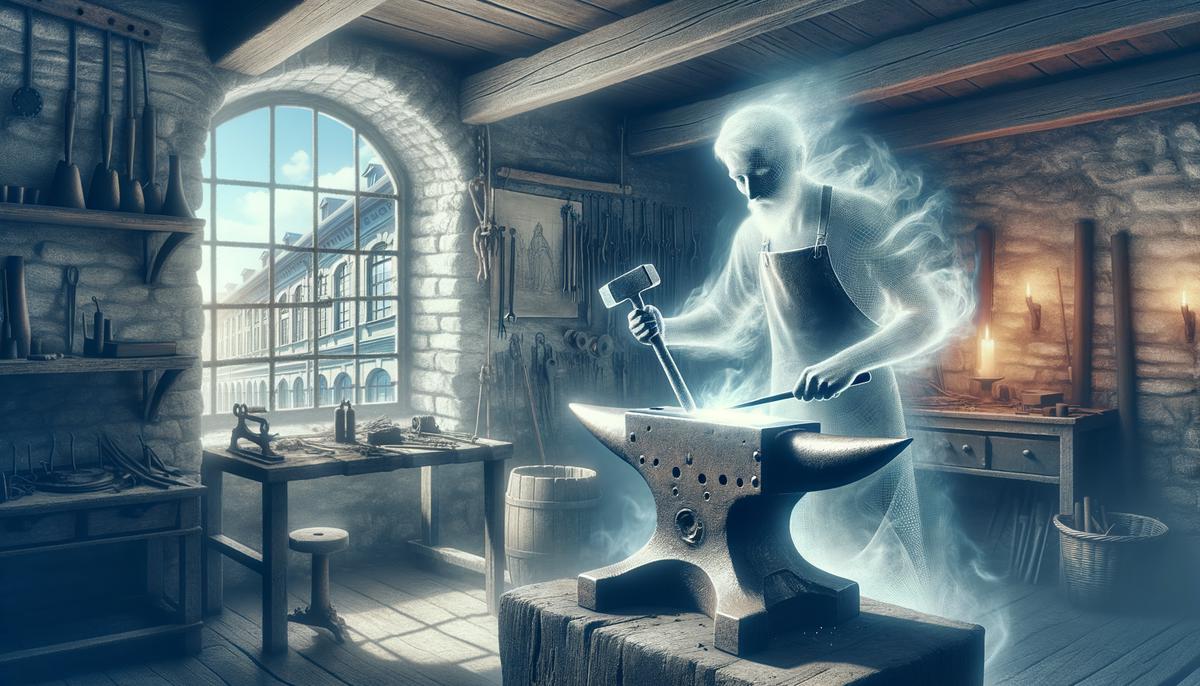
Hidden Shadows in Everyday Life
Ever think about how we might be surrounded by ghostly echoes without knowing it? It's a creepy idea, like a whisper in the dark. We go about our days, not realizing the eerie stories playing out around us. But sometimes, little hints break through, showing us a world beyond what we can see.
Imagine you're at a cozy café as the sun sets. The mood is warm, with quiet chatter and the soft clink of cups. As it gets darker, you might see a quick shadow out of the corner of your eye. At first, you ignore it. But then you see it again, and it gives you chills. Is it just your imagination, or are you seeing a moment from someone else's past?
These little clues are like ghostly breadcrumbs, leading you to a bigger mystery. They can be:
- A cold spot in a warm room
- The smell of old perfume
- The feeling of being watched
These aren't always scary. Often, they're sad – like someone wants their story to be remembered. The faint sound of music from a piano no one's playing, or the smell of baking bread in an empty kitchen – small bits of past lives peeking into our world.
"That shiver might not be from the cold, but from a ghostly finger barely touching you."
So next time you're in your favorite park or walking through an old building, pay attention to the little things. You might find those odd moments full of mystery, like an unfinished story waiting for you to turn the page.
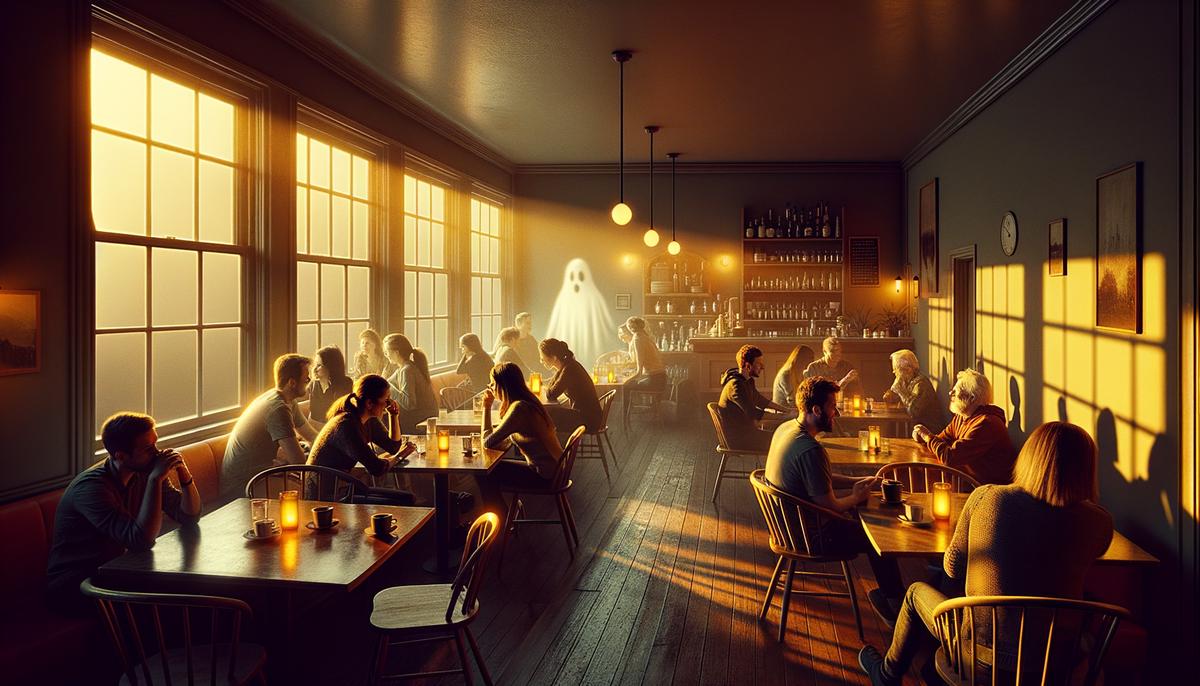
Bringing Hauntings to Life
Hauntings come alive through vivid imagery, sensory details, and repetition. Picture stepping into a room frozen in time, where shadows tell stories of the past. The air feels heavy, making your skin tingle.
As you enter, you see:
- Old wallpaper peeling off
- Cobwebs sparkling in corners
- A dusty chandelier hanging above
- A candle flickering mysteriously
It's not just what you see, but what you feel, hear, and smell:
- A faint scent of lavender perfume
- Soft, sad music from an unseen piano
- A cold touch on your cheek
Repetition adds to the eerie feeling. Imagine:
- Three knocks at the window every night
- A ghostly figure appearing each full moon
- A soldier's footsteps at midnight
- Children's laughter at dusk
These elements work together to create a haunting story that mixes the present with echoes of the past, inviting you to witness its endless tale.
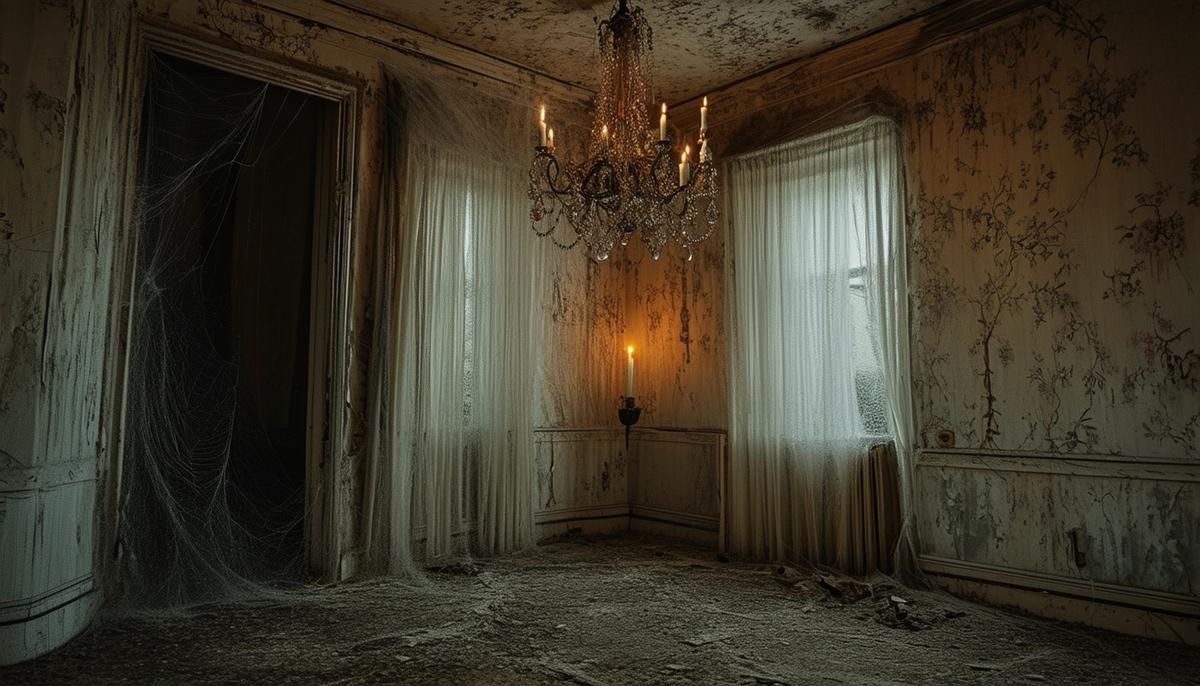
Finding Patterns in Hauntings
Understanding hauntings means spotting patterns. It's like being a ghost detective, piecing together clues and odd events to solve a puzzle.
Start by noting every strange thing you see or hear:
- Footsteps always starting in the library
- Laughter coming from the old nursery
- A ghostly lady appearing at dusk
- A soldier marching at midnight
Look into the history of the place. Read old letters, diaries, and records. You might find stories about:
- A sad nanny who lost children in her care
- Soldiers who died on the property
- A fire that trapped children in the nursery
Watch for things that happen over and over. This helps you understand the haunting better. You might start to expect certain ghostly events instead of being scared by them.
By noticing these patterns, you connect with the spirits in a way. You're learning their stories and acknowledging their presence. It turns a scary experience into a chance to understand the past.
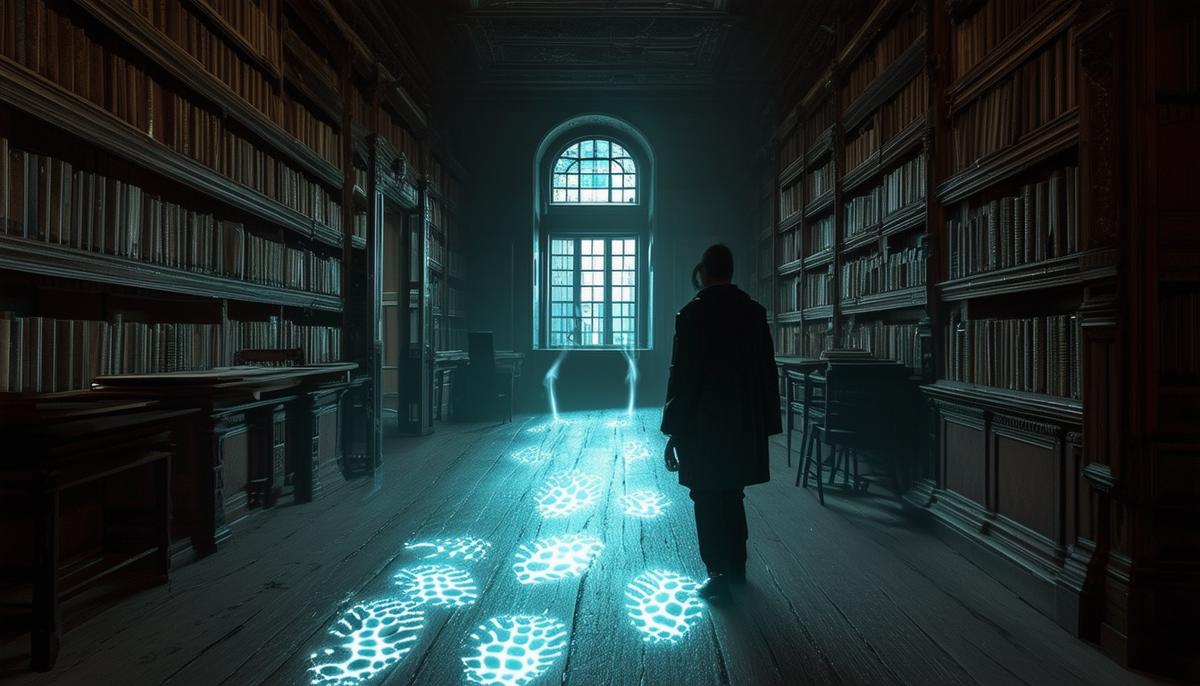
Looking for Answers
To learn more about hauntings, talk to experts, do research, and share what you find.
Imagine talking to a historian who knows a lot about old houses and battles. They might say:
"Each haunting is a window into an important past. The stronger the feeling, like great sadness or joy, the stronger the haunting."
Do your own research too. Look through:
- Old newspapers
- Property records
- Weather reports from long ago
You might find a story about a nanny and children who died in a fire. This could explain the ghostly laughter and cold spots you felt near the nursery.
Share what you learn in a clear and respectful way. Tell the story of the haunting, mixing facts with your ghostly experiences. For example:
"The nanny's laughter isn't just scary. It's a sad lullaby from her last moments of love and fear."
By talking to experts, doing research, and sharing stories, you can help others understand and respect these echoes from the past.
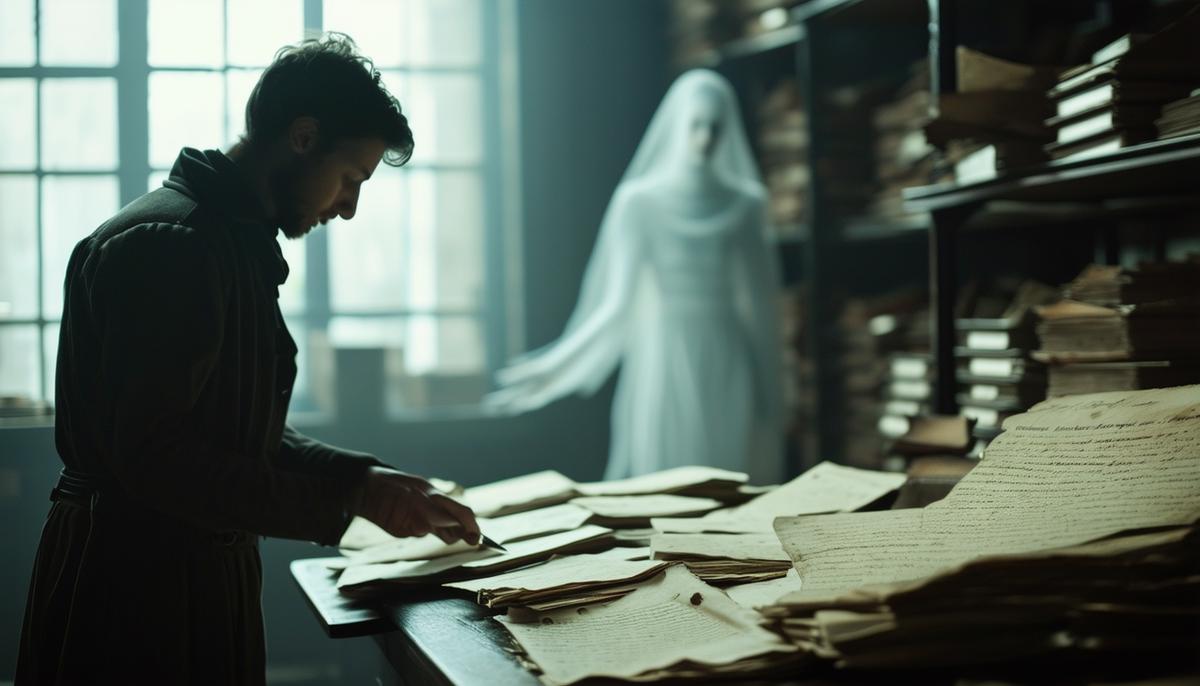
Emotional Connection: Empathy, Emotional Depth, Character Development
The true power of understanding residual hauntings lies in the emotional connections we form with the spirits and their stories. It's about reaching into the core of these ghostly tales and feeling real empathy for the characters trapped within them.
Consider the governess whose laughter echoes through the manor. She isn't just a spooky figure; she's a person who loved and lost. Her story, once uncovered, becomes a sad tale of bravery and heartbreak. Imagine her feelings on that terrible night:
The fear as flames spread through the nursery, her need to comfort the children, her calmness in the face of danger.
Each detail adds layers to her character, making her more than just a ghost.
Empathy starts with understanding. By putting yourself in the shoes of these ghosts, you connect the living and the dead. Think of the soldier who marches every midnight. He was once a young man with dreams and loved ones waiting for him. His ghostly march becomes a symbol of duty and sacrifice.
To show this emotional depth, dive into their backstories. These characters had hopes and fears that are now frozen in time. Describe their quirks and habits that remain in their ghostly existence:
- The governess might hum lullabies, now echoed in eerie sounds heard in the manor.
- The soldier might have a unique way of marching, mirrored in his nightly rounds.
Also, think about how these hauntings affect the living. Describe modern-day people who encounter these ghosts. Their reactions and understanding add another layer to the story. A young historian who finds the governess's diary or a ghost hunter who respects the soldier's duty can bridge past and present.
By telling these stories with empathy and depth, we don't just tell ghost stories. We weave a rich, emotional tapestry that connects past to present, living to dead. It turns ghostly shadows into timeless characters, inviting readers to feel the haunting echoes that echo through time.
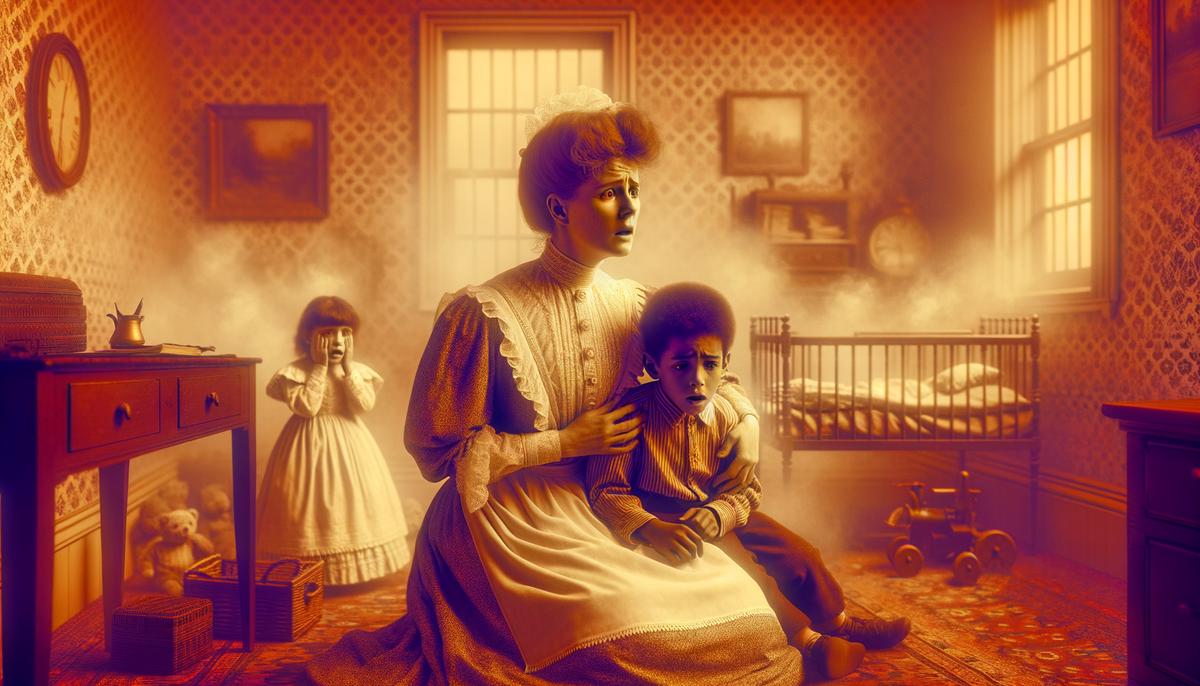
Resolution and Reflection: Reflection, Resolution, Thought-Provoking Conclusion
As we explore residual hauntings, we must think about their endings and what they teach both the living and the ghosts. Every story, even sad ones, needs some kind of ending. It's not about getting rid of ghosts, but understanding and finding peace in stories that last forever.
Think about the governess and her ghostly laughter. We start to see her not as scary, but as a guardian of memories, her presence showing a love stronger than death. Imagine a modern family in the manor, at first scared but later touched by her endless love. They might put a small memorial in the nursery, a simple act that brings some peace to both sides.
The ghostly soldier's endless march might find peace through remembrance. Picture a historian holding a yearly event where people gather to honor fallen soldiers, reading their names by candlelight. Through this, the ghost soldiers feel recognized and maybe their eternal duty becomes easier.
These acts of reflection and resolution show us something important: the stories in residual hauntings connect our world to history. By honoring these ghostly tales, we understand our shared humanity better. The echoes of the past become powerful reminders of love, loss, duty, and human emotion.
Think about how visiting these haunted places changes us – not just through excitement, but through the deep empathy we gain. Each ghost story reminds us that our lives are short moments in the big picture of existence. The governess's songs, the soldier's march, the laughter of ghost children – these are moments so strong they ripple through time, asking us to stop and honor the depth of human experience.
By trying to understand residual hauntings, we learn about ourselves too. These experiences make us think about our own lives – the moments we love, the regrets we have, the legacy we want to leave. The ghostly echoes teach us that while the past is gone, it still shapes the present and future.
The big lesson from these hauntings is that all lives are connected, beyond time and death. The stories we leave behind might one day become the ghostly echoes future people encounter. This reminds us to live with kindness, create with passion, and honor those who came before us.
So, next time you feel a chill or hear a distant sound, remember:
Every echo has a story, every ghost has a past, and every haunting has a lesson.
Listen closely, with an open heart and curious mind, because in these ghostly whispers lies the very core of our humanity, a timeless reminder that we are all, somehow, connected.
